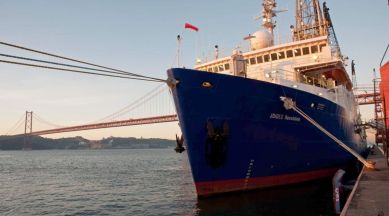A ‘warm ice age’ may have permanently changed Earth’s climate cycles
In about every 100,000 years, the Earth shifted between distinct glacial (ice age) and warm periods. But that only started about 700,000 years ago.

Around 700,000 years ago, polar glaciers expanded greatly during what was otherwise an exceptionally warm and moist period. This “warm ice age” paradox was identified by a European research team who used geological data and computer simulations to come to this conclusion.
This “warm ice age” caused a profound change in our planet’s climate cycles, and could therefore represent a critical step in the evolution of our planet’s climate, according to Heidelberg University.
Geological ice ages
During glacial periods, or geological ice ages, large ice sheets had formed in the northern hemisphere. In about every 100,000 years, the Earth shifted between distinct glacial and warm periods. But that only started about 700,000 years ago.
Before that, Earth had 40,000-year cycles that had shorter and weaker glacial periods. According to Heidelberg University, the change in climate cycles occurred in the Middle Pleistocene Transition period, which began around 1.2 million years ago and ended about 670,000 years ago.
“The mechanisms responsible for this critical change in the global climate rhythm remain largely unknown. They cannot be attributed to variations in the orbital parameters governing the Earth’s climate. But the recently identified ‘warm ice age’, which caused the accumulation of excess continental ice, did play a critical role,” explained André Bahr in a press statement.
Bahr is an associate professor at the Institute of Earth Sciences at Heidelberg University and co-author of the paper on the subject published in the journal Nature Communications.
Researching the Earth’s climate cycles
To investigate the Earth’s climate rhythm, the researchers took advantage of climate records of drill core samples from Portugal and “loess” records from China. Loess refers to windblown sediments that are deposited on land.
After feeding this data into computer simulations, the researchers discovered long-term warming and wetting trends in both the regions in the period between 800,000 to 670,000 years ago. While this period corresponds to the last ice age in the Middle Pleistocene Transition period, the sea surface temperature seemed to be warmer than during the previous interglacial period. Interglacial period refers to the phase between two ice ages.
These higher temperatures led to higher moisture production and rainfall in Southwest Europe and an enhanced summer monsoon in East Asia. Interestingly, this moisture also reached the polar regions, where it contributed to the expansion of the Northern Eurasian ice sheets.
“They persisted for some time and heralded in the phase of sustained and far-reaching ice-age glaciation that lasted until the late Pleistocene. Such expansion of the continental glaciers was necessary to trigger the shift from the 40,000-year cycles to the 100,000-year cycles we experience today, which was critical for the Earth’s later climate evolution,” added Bahr.